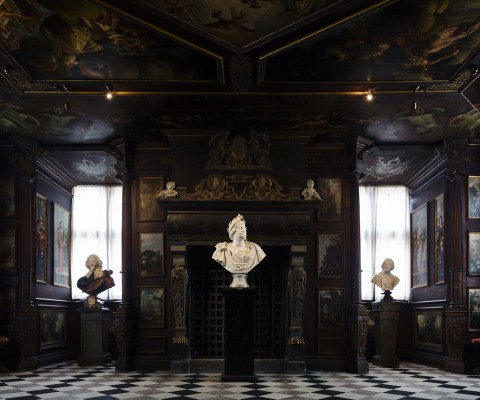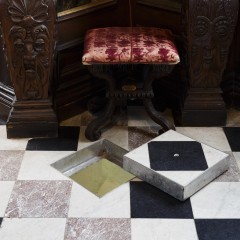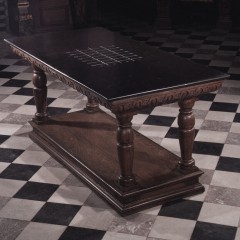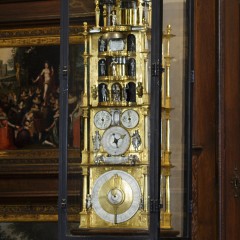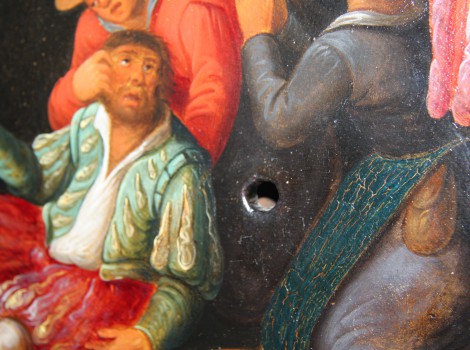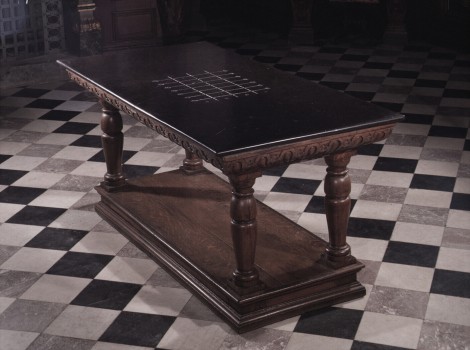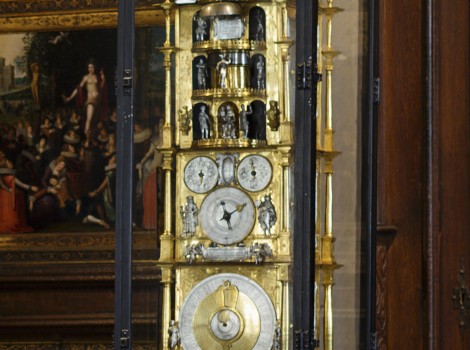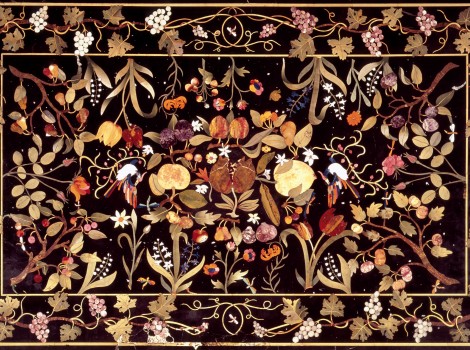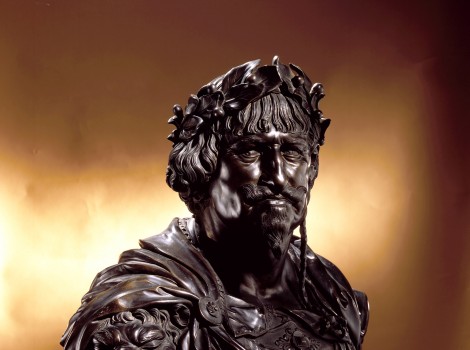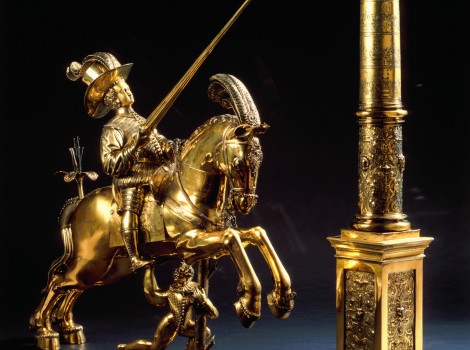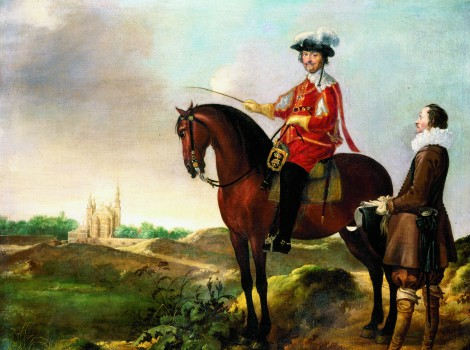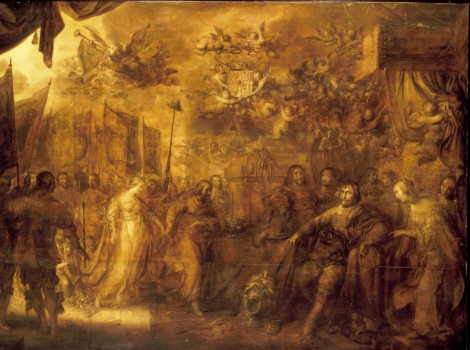1: Christian IV’s Winter Room
This room is currently being restored. Read more about the project here.
The Winter Room is the best preserved room from the original Castle, and it was the most important of the King’s three private chambers. The bays are from 1758. In front of the bay to the right stood Christian IV’s mechanical arrangement for raising and lowering the drawbridge. Christian IV lay in state here and the exhibits are mostly from his time.
The rich panelling was made by Court cabinet-maker Gregor Greuss and were completed around 1620. The inlaid paintings were purchased in Antwerp and constitute a unique collection of art from the Netherlands, although most of the artists are unknown. The original stucco ceiling was replaced around 1770 with Pieter Isaacsz’ mythological paintings from the room above, including The Feast of the Gods and The Fall of the Giants.
A speaking tube connects the Winter Room to the Wine Cellar, to the room above and to the gable room at the opposite end of the Castle. Audio channels in the floor allowed the King and his astonished guests to hear music being played from the cellar vault.

 Dansk
Dansk
 English
English
 Deutsch
Deutsch

